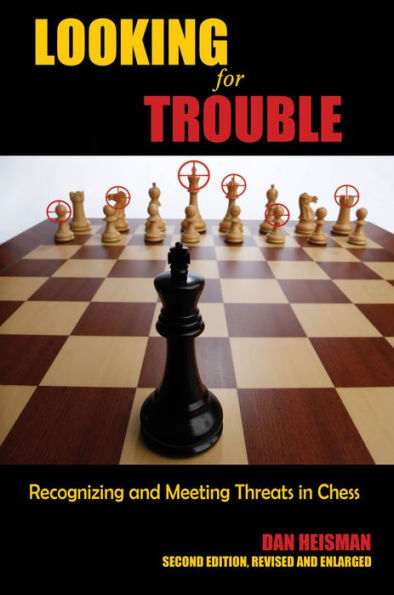Read an Excerpt
Introduction What is a threat? Threat – a move which, if not stopped by the opponent’s reply, can do something harmful to the opponent and/or useful on the next move. So you can threaten to win material, checkmate, create a passed pawn, make the opponent’s king unsafe, ruin the opponent’s pawn structure, etc. In other words, a threat is a move that allows you to do something constructive next move if not stopped. On the other hand, a tactic is a forced sequence of moves that win material or deliver checkmate. Many threats are not tactics because they are easily de-fended; the threat to win material or checkmate is not forced. If the threat is unstoppable, of course, it will likely initiate a tactic. As we will discuss be-low, threats that are defensible may be good moves, but often are not. For beginning and intermediate players, the study of tactics is paramount. Almost all tactics books provide positions with forced wins and draws, and the reader is shown the moves (examples) and/or asked to find the solution (puzzles).However, at those levels of play, most games are lost when one player either: (1) makes an outright oversight, where the opponent had no prior threat but, after the player blunders, the opponent can mate or win material; or (2) misses a threat made by the opponent’s previous move, allowing the opponent to carry out a tactic. Although studying tactical problems improves your play, you will not receive the full benefits if you only use this ability to spot offensive opportunities that arise for yourself on your move. Winning material and checkmating are great, but preventing those same ta-tics from happening to you is just as important. Your chances of avoiding these common mistakes improve if you also consider these “Play and Win” problems from a defensive standpoint. You should improve your tactical ability both to spot threats generated by your opponent’s previous move and to ensure that your move doesn’t create new tactical opportunities for him aswell. Looking for Trouble addresses this underemphasized area of training and study. By providing problems that re-quire you to both identify threats and provide best solutions, this book not only facilitates this additional focus, but it takes it a step further by overtly forcing you to consider prior and upcoming tactics for both players before deciding upon your move.



